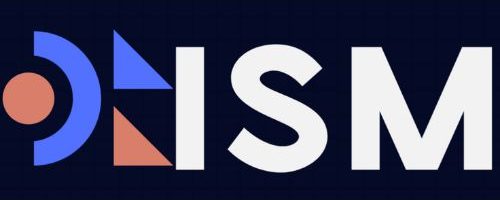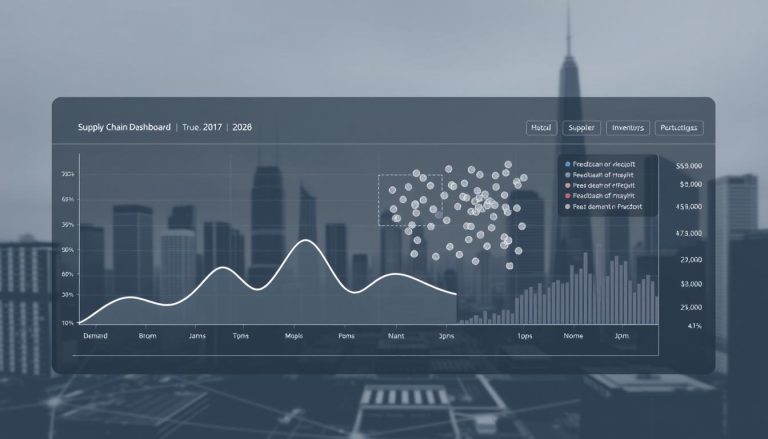Streamline Procurement and Supply Chain Processes
Streamlined operations bring speed, control, and significant savings. This article outlines a practical guide for procurement and supply chain management. It covers digital procurement, automation, analytics, blockchain, strategic sourcing, and more. The aim is to achieve resilient performance with transparent governance and objective KPIs.
Tom Peters highlighted that most quality gains stem from simplifying processes. The same principle applies to procurement. Post-pandemic, volatility revealed weaknesses in legacy systems and manual workflows. These issues slow down cycle times, hinder supplier communication, and increase total costs.
Adoption of proven tools is on the rise. Recent CPO surveys show 66% use procure-to-pay platforms, 59% employ spend analytics, and 50% have contract management software. Effective procurement technology integration links these systems to policy, risk controls, and category strategies. This results in faster approvals, cleaner data, and lower leakage.
The strategic mandate goes beyond cost. Leading teams align sourcing with supply chain sustainability, risk reduction, and business continuity. Centralized governance, clear role design, and audit-ready records transform procurement into a strategic partner with enterprise reach.
What follows is a structured guide for U.S. organizations seeking reliable execution. It translates market evidence into actions that enhance cycle time, on-time delivery, compliance, and supplier performance. It does so without compromising resilience and sustainability goals in procurement and supply chain management.
Why Streamlining Matters for Procurement and Supply Chain Processes
Streamlining merges disparate tasks into a unified flow within the enterprise. It minimizes rework, shortens cycle times, and enhances data precision. This leads to quicker purchasing decisions, robust governance, and quantifiable improvements in procurement processes.
Balancing efficiency with productivity across the enterprise
Automation automates mundane tasks like invoice matching and PO creation. UK businesses lose about 10% of their workday on such tasks, amounting to around 160 hours per employee annually. This time can be redirected to more strategic activities like supplier negotiations and category strategies.
This equilibrium is critical for procurement and supply chain management. It enables teams to increase throughput while maintaining quality standards. Clear workflows and role-based approvals enhance procurement efficiency without hindering daily operations.
Linking operational savings to strategic outcomes and sustainability
Shippers using third-party logistics see a 9% reduction in logistics costs, including 5% in inventory and 15% in fixed logistics costs. These savings can fund supplier development, analytics upgrades, and training. They also support sustainability initiatives that require continuous tracking and credible data.
Digital procurement enhances spend visibility and provenance checks. It enables thorough due diligence, ESG disclosures, and risk assessments. Analytics validating supplier performance link savings to long-term resilience and sustainability goals.
Turning procurement into a strategic function aligned to corporate priorities
Procurement evolves into a strategic partner when measured against key performance indicators. Centralized models, like Yale University Procurement, leverage pooled demand for better prices and simplified acquisitions. This approach bolsters governance and accelerates procurement process enhancements.
As AI enhances tasks, roles evolve towards analytics, contracting, and risk evaluation. Continuous capability development ensures procurement and supply chain management remain in sync with corporate goals and sustainability targets.
Foundations: Understanding the Procurement Process Flow
Clear process flow is essential for procurement process improvement and effective procurement and supply chain management. Standard terms, consistent documents, and precise approvals reduce cycle time. They also strengthen controls across business units.
Key documents: purchase requisitions, purchase orders, invoices, and records
Four documents are central to the flow. A purchase requisition is an internal request with scope, quantity, and budget approval. A purchase order is external and binding when no master agreement exists. It includes a PO number, terms, delivery dates, and service levels.
An invoice is the supplier’s request for payment that references the PO and delivered items. Centralized records store each artifact in sequence, from requisition through invoice. They capture revisions and approvals for procurement process improvement and procurement and supply chain management.
Nine essential steps from internal need to centralized recordkeeping
- Determine internal requirements and aggregate demand across departments to increase visibility and leverage.
- Assess and select suppliers using searches, RFIs, or RFPs; evaluate price, quality, reliability, and service history.
- Negotiate contracts or rely on enforceable POs; review EULAs, payment terms, warranties, indemnities, schedules, and scope.
- Approve the purchase requisition with item, price, and terms documented.
- Issue the purchase order from procurement or finance to the vendor.
- Receive the invoice and perform two- or three-way match with the PO and receipts; handle deposits when applicable.
- Accept and inspect goods or services; note discrepancies within stated windows; confirm activation for SaaS or online tools.
- Make final payment per agreed terms, such as net 30.
- Maintain centralized, accurate records to enable spend analysis and support audits.
Sales or work orders may interface with the flow when phased fulfillment or project delivery drives staged purchasing. This linkage sustains procurement process improvement while aligning with procurement and supply chain management controls.
How centralization reduces risk and supports audit-readiness
Centralization creates a single repository that standardizes approvals, terms, and supplier data. It curbs fraud risk by tightening who can create, approve, and modify documents. Version control preserves the audit trail from need identification through payment.
With consistent, searchable records, finance teams can reconcile accruals, compliance leaders can test controls, and analysts can model spend by category, supplier, and region. The same structure enables machine learning to flag anomalies and supports scalable procurement and supply chain management programs focused on procurement process improvement.
Digital Procurement and Technology Integration
Enterprises are now scaling their digital capabilities to link spend control with operational speed. Effective procurement technology integration is key to achieving clear data, faster cycle times, and compliant buying across teams. In mature procurement and supply chain management programs, systems work seamlessly from requisition to payment.
E-procurement adoption trends and ERP landscape by company size
Enterprise Resource Planning adoption grows with company size: about 7% for firms under 50 employees, 37% for 50–249, and 69% for 1,000 or more. In e-procurement, 66% of chief procurement officers report procure-to-pay in place, 59% use spend analytics, and 50% run contract management software. These figures highlight a steady shift toward unified data and standardized workflows.
Buyer behavior also shapes roadmaps. Research shows 76% of B2B buyers want a salesperson during evaluation, while 46% would purchase on suppliers’ sites if options are efficient. Integration plans must balance digital self-service with human support.
Source-to-Pay platforms, supplier portals, and contract management tools
Source-to-Pay suites like Coupa offer end-to-end visibility, guided buying, and audit-ready records. These platforms automate approvals, flag policy breaches, and enable category-level controls. This strengthens procurement and supply chain management.
Supplier portals streamline PO acknowledgments, certification updates, and compliance documents. They reduce email traffic and improve data quality shared with finance and operations. Centralized repositories and contract lifecycle management systems track terms, milestones, and renewals. This reduces missed obligations and unplanned disruptions.
Aligning tech choices with business strategy and cross-functional needs
Selection must tie to strategy. Involve finance, IT, operations, and legal to align e-procurement features with the operating model. Evaluate implementation cost against expected savings from analytics-driven sourcing and reduced leakage.
Balance control with relationships. If in-person collaboration is essential, avoid over-optimizing for digital enforcement at the expense of supplier value. Consulting partners can accelerate deployment and data quality so decision-makers access real-time information. This approach supports sustainable procurement technology integration across the enterprise.
Automation, AI, and Spend Analytics for Process Improvement
Automation is now a cornerstone in procurement and supply chain management. In just 18 months, only 3% of teams will not adopt automation. By 2025, 96% of companies will use AI for tasks like invoice processing and inventory tracking. These changes are driving improvements in the procurement process while maintaining governance.
Clean, digital data enhances controls and reduces maverick purchasing. It also fuels machine learning for demand recognition and requisition automation. This supports quicker decision-making and better compliance.
From procure-to-pay to invoice automation: reducing manual workload
Manual entry slows teams and increases errors. UK firms lose about 10% of the workday chasing invoices. Automated invoice generation and three-way matching reduce rework and speed up approvals. This results in fewer exceptions and more time for sourcing and supplier strategy.
Automated workflows standardize requests, route POs for approval, and sync receipts with inventory. In procurement and supply chain management, this frees capacity for supplier development and market analysis.
Real-time spend analytics for supplier selection and risk reduction
AI-enabled spend analytics evaluates demand, parts, and markets in real time. It conducts pre-, in-, and post-sourcing reviews using internal and external data. This improves supplier selection, flags price variance, and highlights risk exposure by category and region.
With unified taxonomies and enriched vendor data, teams detect duplicate suppliers, negotiate based on total cost, and segment awards by performance and risk posture. These steps reinforce procurement process improvement and raise sourcing quality.
KPIs that matter: cycle time, on-time delivery, cost savings, and supplier ratings
Clear metrics provide objective evidence of progress and align stakeholders. Cycle time measures approval speed from requisition to PO. On-time delivery captures supplier reliability across lanes and sites. Cost savings track realized budget impact, not just forecasted. Supplier ratings assess quality, responsiveness, and compliance trends.
Regular KPI reviews guide corrective actions and investment choices in tools and data. When paired with spend analytics, these metrics show where automation removes friction and where governance needs reinforcement.
| KPI | Definition | Automation/AI Impact | Data Source | Action Trigger |
|---|---|---|---|---|
| Procurement Cycle Time | Elapsed time from approved requisition to PO issuance | Auto-routing and approvals cut wait times by removing manual handoffs | ERP workflow logs; approval timestamps | Escalate when cycle time exceeds target by 15% for two weeks |
| On-Time Delivery Rate | Share of orders delivered on or before promised date | Predictive alerts adjust schedules and expedite critical items | WMS receipts; ASN data; carrier scans | Launch supplier corrective plan below 95% for a rolling month |
| Cost Savings Achieved | Realized reduction versus baseline after implementation | Dynamic price benchmarking and demand consolidation highlight savings | P2P spend cubes; contract terms; invoice history | Rebid category when realized savings fall below 70% of plan |
| Supplier Performance Rating | Composite index of quality, responsiveness, and compliance | Machine learning scores blend defects, OTIF, and service levels | QMS records; delivery metrics; SLA dashboards | Shift award share when score drops a full tier for two cycles |
Blockchain for Trust, Traceability, and Transparency
Blockchain records transactions on a shared, tamper-evident ledger across a peer-to-peer network. This architecture enables verifiable histories of products, documents, and events. It supports procurement technology integration and advances supply chain sustainability through proof of origin and ethical sourcing claims.
What blockchain brings to supply chain auditing and provenance
Distributed ledgers provide immutable time stamps and cryptographic signatures. This makes audits faster and more reliable, with fewer reconciliations and less manual sampling. According to industry surveys, 80% of procurement professionals plan to use blockchain to track products through the chain of custody.
Decentralization removes single points of failure and enhances fraud detection. Provenance data—farm, mine, factory, and carrier—can be anchored on-chain and checked against purchase orders and invoices. This improves procurement and supply chain management controls and supports supply chain sustainability certifications for materials and labor practices.
Adoption intent versus obstacles: education, pilots, and performance limits
Interest is high, but capability gaps slow progress. A lack of understanding is cited by 28% as the top barrier and by 34% as the second. Transaction throughput and latency can also limit real-time scenarios.
Pilots and proofs of concept help teams validate fit, benchmark performance, and refine data governance. Clear interoperability plans with ERP and source-to-pay tools streamline procurement technology integration and reduce change risk across finance, legal, and operations.
Use cases: tracking deliveries, materials, contracts, and accounts payable
- Deliveries and demand: log carrier handoffs, GPS events, and delivery confirmations to verify on-time performance and reduce disputes.
- Material consumption: record lot numbers, batch usage, and yield to tie inputs to finished goods for recall readiness and supply chain sustainability reporting.
- Receipts and quality: capture goods receipt with inspection data to align three-way match and strengthen internal controls.
- Contracts and accounts payable: store hashes of agreements, link milestones to smart-contract triggers, and synchronize invoice status for auditability.
Enterprises can align these use cases with procurement and supply chain management objectives, such as risk mitigation, ESG disclosure, and working capital efficiency. When designed with robust identity, consensus, and integration patterns, blockchain complements procurement technology integration and elevates data integrity end to end.
Procurement and Supply Chain Management
In today’s world, procurement and supply chain management are key to connecting external markets with internal needs. A well-defined operating model ensures timely delivery of materials and services to production and service teams. This ensures smooth operations, high service levels, and protects profit margins during market fluctuations.
A robust digital procurement strategy replaces outdated tools with a seamless source-to-pay system. By integrating ERP modules from SAP and Oracle, requisitions, purchase orders, and invoicing are standardized across departments. This streamlines strategic sourcing, diversifies suppliers, and reduces risks while maintaining daily operations.
Real-time data is essential. Teams should use flowcharts and swimlane diagrams to map workflows, identify responsibilities, and pinpoint bottlenecks. This clarity in approvals, lead times, and exceptions shortens the cycle time and minimizes rework.
Performance management is the driving force behind continuous improvement. Tracking KPIs such as on-time delivery, cost savings, cycle time, and supplier ratings allows for trend analysis and corrective actions. Dashboards in Power BI or Tableau provide instant status updates for category managers and finance leaders.
Effective supplier relationship management goes beyond simple transactions to foster collaboration. Regular reviews, issue logs, and joint improvement plans foster accountability. Collaborations with IBM, Schneider Electric, or Microsoft enhance value through innovations in traceability, quality, and sustainability.
Strategic sourcing aligns categories with business goals and total cost of ownership. Cross-functional teams assess specifications, volume, and risk to set award strategies. This approach builds resilience against supply chain disruptions and boosts working capital and service reliability.

- Operating model: unified processes, shared data standards, and clear roles across procurement and supply chain management.
- Process diagnostics: mapped workflows to identify delays, rework points, and ownership gaps.
- Strategic sourcing: competitive tension balanced with long-term value and risk controls.
- Supplier relationship management: structured governance, open communication, and joint performance reviews.
- KPI cadence: consistent measurement of on-time delivery, cost savings, cycle time, and supplier ratings.
This combined discipline ensures that planning, sourcing, and fulfillment operate as a single system. With accurate data, rigorous analytics, and coordinated efforts, organizations can enhance efficiency while maintaining quality and service.
Strategic Sourcing and Supplier Relationship Management
Organizations focus on strategic sourcing to align spend with risk control, service levels, and quality. They use disciplined category plans and market scans to secure value while maintaining continuity. Effective supplier relationship management builds trust, improves terms, and supports supplier diversity goals without sacrificing performance.
Diversification, resilience, and total cost of ownership
Diversified supplier portfolios reduce exposure to decommits, shortages, and price shocks. Teams evaluate total cost of ownership, covering logistics, maintenance, and lifecycle costs, not just unit price. This approach strengthens resilience and supports sustainable outcomes across procurement and supply chain management.
Leading manufacturers, including Toyota and Procter & Gamble, apply dual sourcing and nearshoring to stabilize lead times. Such practices also advance supplier diversity by adding qualified small and minority-owned firms to the mix.
Supplier performance management and data-driven scorecards
Data-driven scorecards track on-time delivery, defect rates, responsiveness, and contract compliance. Clear thresholds surface risks early and guide corrective plans. Quarterly business reviews with measurable targets sustain improvement and protect service consistency.
Integrated analytics within ERP and Source-to-Pay platforms allow benchmarking across plants and regions. Strategic sourcing teams use these results to adjust volumes, rebalance risk, and strengthen supplier relationship management.
Supplier collaboration through shared forecasts and market intelligence
Sharing demand forecasts, production schedules, and inventory signals cuts buffers and improves response. Joint planning with suppliers reduces lead times and enables rapid capacity shifts during market swings. Co-development workshops can yield cost takeout, process gains, and product upgrades.
Companies like Cisco and Unilever pair forecast collaboration with commodity market intelligence to align buys with pricing windows. These practices anchor procurement and supply chain management in fact-based decisions while advancing supplier diversity in qualified categories.
| Practice | Primary Objective | Key Metrics | Operational Effect | Role in Strategic Sourcing |
|---|---|---|---|---|
| Diversified Supplier Portfolio | Resilience and continuity | Dual-source ratio, supply risk score | Lower disruption impact and faster recovery | Expands options and supports supplier diversity |
| Total Cost of Ownership Analysis | Lifecycle economics | Landed cost, maintenance cost, warranty claims | Reduced hidden costs and predictable margins | Guides award decisions beyond unit price |
| Data-Driven Scorecards | Performance accountability | On-time delivery, defects per million, responsiveness | Early issue detection and corrective action | Enables precise supplier relationship management |
| Forecast and Schedule Sharing | Lead-time reduction | Forecast accuracy, schedule adherence | Lower inventory and improved service levels | Strengthens collaboration and capacity planning |
| Market Intelligence Exchange | Informed buying windows | Price variance vs. index, coverage duration | Better timing on buys and reduced volatility | Aligns awards with commodity dynamics |
| Structured RFx and Spend Analysis | Leverage and transparency | Bid competitiveness, coverage of qualified suppliers | Improved terms and reduced cycle time | Core engine of procurement and supply chain management |
Execution relies on disciplined RFx events, rigorous supplier vetting, and cross-functional signoffs. Strategic sourcing pairs commercial rigor with robust supplier relationship management to scale value, elevate quality, and advance supplier diversity across critical categories.
Logistics Optimization with Third-Party Logistics (3PL)
Companies turn to third-party partners to enhance distribution, speed, and cost stability. In the United States, logistics optimization with expert providers is key in procurement and supply chain management. Market data shows broad adoption and measurable savings when the scope and governance are well defined.
Cost and performance impacts of partnering with 3PL providers
The global 3PL market hit $273.8 billion in 2016, showing steady demand. Surveys reveal 92% of shippers have successful relationships with providers. They report an average 9% cost reduction, with 5% lower inventory costs and 15% lower fixed logistics costs.
Providers offer network modeling, mode mix design, and continuous improvement. Their TMS and WMS platforms boost on-time performance and fill rates. This strengthens procurement and supply chain management end to end. These gains support logistics optimization without large in-house capital outlays.
RFI essentials: scope, volumes, and value beyond basic services
An effective RFI outlines lanes, shipment profiles, seasonality, and service levels. It details monthly volumes, cube and weight, and required cutoffs. The document must also request value-added capabilities such as analytics, visibility, control tower support, and integration with ERP.
Teams should benchmark current costs, carrier contracts, and dwell times. This baseline clarifies the savings range and informs the business case. Clear evaluation criteria align logistics optimization with procurement and supply chain management objectives.
Trade-offs: savings, expertise, and control over the supply chain
3PLs bring expertise in network optimization and advanced analytics. Firms gain faster scaling and better tracking but cede some day-to-day control. Smaller organizations may prefer direct carrier contact for specific accounts or lanes.
To balance these factors, set KPIs, SLAs, and review routines. Governance preserves strategic control while the provider executes operations. This structure keeps logistics optimization aligned with procurement and supply chain management priorities.
| Decision Area | In-House Model | 3PL Partnership | Measured Impact |
|---|---|---|---|
| Cost Structure | Higher fixed costs for assets and systems | More variable costs; scale through provider network | Average 9% total logistics cost reduction |
| Inventory Carrying | Limited multi-node optimization | Network design to reduce buffers | 5% lower inventory costs reported |
| Technology | CapEx for TMS/WMS and integration | Access to mature TMS/WMS and visibility tools | Improved on-time delivery and order accuracy |
| Control | Direct operational command of carriers and sites | Shared governance; provider executes operations | Requires clear KPIs and SLAs |
| Speed to Improve | Longer timelines for process and tech changes | Faster deployment via established playbooks | Quicker cycle-time and lead-time reductions |
| Market Evidence | Case-by-case success | 92% of shippers report successful relationships | 15% lower fixed logistics costs reported |
Inventory Control, Demand Forecasting, and Spend Management
Strong cash positions stem from disciplined inventory control, precise demand forecasting, and strict spend management. Centralized data, automated workflows, and clear policies align working capital with service levels. This approach reduces volatility.
Consolidating suppliers and categories to increase leverage
Centralizing and purifying enterprise spend data uncovers fragmented buying across plants and business units. By consolidating suppliers and standardizing categories, leverage with OEMs and distributors like Siemens, Schneider Electric, and Grainger increases.
Volume aggregation leads to tiered discounts, better rebates, and easier contract management. It streamlines inventory control by reducing duplicate SKUs. Reliable demand forecasting comes from a single source of truth.
JIT, VMI, and consignment models to free cash and reduce risk
Just-in-time aligns deliveries with the production plan, cutting holding costs and shrinkage. Vendor-managed inventory shifts monitoring and replenishment to suppliers, lowering internal workload and stockouts. Consignment keeps stock on-site but supplier-owned until use, improving cash flow and reducing financial risk.
Automated reorder points and IoT signals from bins and shelves support these models. They help achieve spend management goals and stabilize procurement and supply chain management performance during demand swings.
Detecting maverick spend and improving compliance with preferred suppliers
AI-driven analytics detect maverick spend by comparing line items to contracted pricing and catalogs. Dashboards guide buyers to preferred suppliers like Amazon Business and Fastenal. This enforces negotiated terms and delivery SLAs.
Integrated procure-to-pay and invoice automation reduce cycle time, disputes, and exceptions. Clean digital records enhance demand forecasting accuracy, strengthen inventory control parameters, and provide auditable spend management controls across procurement and supply chain management.
Conclusion
Streamlined procurement and supply chain management rely on standardized processes, centralized records, and strict controls. The integration of procurement technology, including e-procurement and source-to-pay suites, enhances transparency and efficiency. Automation and AI transform fragmented steps into a cohesive model, reducing manual tasks and boosting supplier performance.
Improving procurement processes leads to tangible results. Unified data and clear approval paths minimize errors and rework. Blockchain pilots enhance trust in provenance and auditing, while 3PL partnerships can lower logistics costs. Strategic sourcing and supplier collaboration improve resilience and total cost of ownership.
An effective roadmap begins with real-time data, thorough process mapping, and focused automation. Teams monitor KPIs like cycle time and cost savings. Regular reviews using Lean and Six Sigma eliminate waste, stabilizing performance. This approach converts operational gains into strategic value through technology integration and process improvement.
Investing in these strategies yields savings, reduced risk, and greater agility for enterprises. Aligning procurement with corporate goals, including sustainability, links operational results to strategic outcomes. This creates a lasting advantage for U.S. businesses, enabling faster decisions, higher service levels, and a resilient cost base.
FAQ
How does streamlining procurement improve both efficiency and productivity?
Simplifying the procurement process reduces handoffs and errors. This cuts cycle time and automates routine tasks like PO creation and invoice matching. Teams then focus on strategic sourcing, managing supplier relationships, and controlling risks. This boosts throughput and decision quality across the enterprise.
Which documents anchor a compliant procurement process?
Key documents include purchase requisitions for internal approval and purchase orders as binding commitments. Supplier invoices referencing the PO and centralized records linking requisition-to-invoice are also essential. This chain supports audit readiness, spend analysis, and contract compliance.
What are the nine essential steps from need identification to centralized recordkeeping?
First, aggregate internal requirements. Then, assess suppliers via RFI/RFP and negotiate terms or use enforceable POs. Approve the requisition and issue the PO. Next, receive and match the invoice, inspect goods/services, and pay per terms. Lastly, store complete digital records to enable analytics and controls.
How does centralization reduce procurement risk?
Centralization improves compliance, flags maverick spend, and strengthens inventory control. It enhances audit trails, enables demand forecasting and analytics, and reduces fraud exposure through transparent, standardized workflows.
What are current adoption levels for digital procurement tools?
Among CPOs, 66% report procure-to-pay systems in place, 59% use spend analytics, and 50% deploy contract management software. ERP usage scales with size: roughly 7% in firms under 50 employees, 37% in mid-market, and 69% in large enterprises.
How do Source-to-Pay platforms, supplier portals, and CLM tools add value?
Suites like Coupa deliver end-to-end spend visibility, workflow automation, and policy controls. Supplier portals streamline PO responses and certifications, improving data accuracy. Contract lifecycle management centralizes terms, milestones, and renewals to prevent leakage and disruption.
How should technology choices align with business strategy?
Involve cross-functional stakeholders and weigh implementation cost against savings from analytics and strategic sourcing. Select solutions that fit operating models, balancing digital compliance with relationship value for categories that depend on collaboration.
Where does automation deliver the fastest procurement ROI?
Procure-to-pay automation, two- and three-way matching, and touchless invoice processing cut manual work and errors. UK companies report spending about 10% of the workday chasing invoices; automation recovers time for supplier negotiations and category strategy.
What can real-time spend analytics improve in supplier selection?
AI-enabled analytics evaluate demand patterns, component costs, market indices, and supplier performance. This reduces risk, strengthens negotiation leverage, and supports strategic sourcing decisions that balance cost, reliability, and resilience.
Which KPIs best measure procurement performance?
Track procurement cycle time, on-time delivery rate, cost savings achieved, and supplier performance ratings. These metrics quantify process improvement, supply reliability, and alignment with corporate goals, including supply chain sustainability.
What does blockchain add to procurement and supply chain transparency?
Blockchain offers immutable, shared ledgers for provenance, auditing, and shared accountability. It supports due diligence, ESG verification, and fraud mitigation by certifying product backstories and recording transactions across partners.
What slows blockchain adoption, and how should teams proceed?
Education is a barrier for many practitioners, and performance can lag for real-time needs. Start with pilots that target high-value use cases, validate throughput, and scale only after proving cost, reliability, and integration with procurement technology.
Which blockchain use cases show the most promise?
Tracking deliveries and material consumption, verifying receipt of goods, managing contracts and accounts payable, and certifying product origins. These improve traceability, compliance, and sustainability reporting.
How do strategic sourcing and SRM increase resilience?
Diversified supplier portfolios and total cost of ownership analysis reduce exposure to shortages and price volatility. Data-driven scorecards and regular reviews improve quality, responsiveness, and compliance, while collaboration enables co-innovation.
What belongs on a supplier scorecard?
Defect rates, on-time delivery, responsiveness, contract compliance, and corrective action closure. Objective measures surface issues early and guide performance improvement and supplier development initiatives.
How can sharing forecasts with suppliers reduce risk?
Exchanging demand forecasts, production schedules, and market signals shortens lead times and stabilizes supply. It aligns capacity plans, reduces variability, and supports inventory optimization across the supply chain.
What cost impacts are typical when using a 3PL?
Shippers report an average 9% reduction in logistics costs, including about 5% lower inventory costs and 15% lower fixed logistics costs. Most users describe relationships with 3PLs as successful, citing access to expertise and advanced systems.
What should an RFI for a 3PL include?
Define scope, shipment volumes, service levels, and value-added capabilities such as TMS/WMS, visibility tools, and analytics. Benchmark current costs and carrier performance to estimate savings and quantify the business case.
What are the trade-offs of outsourcing to a 3PL?
Companies gain scale, technology, and logistics optimization but cede some operational control. Strong SLAs, KPIs, and governance routines preserve strategic oversight while capturing savings and performance gains.
How does spend consolidation strengthen procurement?
Cleansed, centralized spend data reveals fragmented buying. Consolidating suppliers and categories increases leverage, improves pricing, simplifies management, and supports compliance with preferred suppliers.
Which inventory models free cash and reduce stockouts?
Just-in-Time aligns receipts with production to lower storage costs. Vendor-Managed Inventory shifts replenishment to suppliers, reducing internal workload. Consignment keeps stock on-site but supplier-owned until use, improving cash flow.
How can teams detect maverick spend and enforce compliance?
Use AI-driven dashboards to flag off-contract purchases and price variances. Standardized catalogs, preferred supplier lists, and automated approvals channel spend through negotiated terms, improving control and savings.
How does procurement support supply chain sustainability and ESG goals?
Digital procurement improves data quality for spend analytics and sustainability tracking. Blockchain and supplier portals enhance provenance verification, while sourcing criteria and supplier diversity programs embed ESG into supplier selection.
What role do demand forecasting and inventory control play in resilience?
Accurate forecasts based on internal data and market indicators reduce variability and safety stock needs. Better inventory control stabilizes service levels and buffers against disruptions without tying up excess capital.
How do organizations govern digital procurement for continuous improvement?
Establish a centralized operating model, map workflows, deploy automation and AI, and track KPIs. Regular reviews using Lean and Six Sigma remove waste and variation while governance ensures data integrity and policy adherence.
Which capabilities define a modern procurement technology stack?
Integrated ERP with Source-to-Pay, supplier portals, contract lifecycle management, automated P2P, spend analytics, and inventory optimization. Seamless procurement technology integration enables end-to-end visibility and faster, compliant execution.
How does supplier diversity fit into strategic sourcing?
Structured programs expand the supplier base, increase competition, and improve resilience. Measurable targets and performance monitoring ensure diverse suppliers meet quality and service benchmarks while advancing corporate social goals.
What is the link between savings and strategy in procurement?
Operational savings from logistics optimization and process automation fund strategic initiatives such as supplier development, advanced analytics, and sustainability programs. This converts cost reductions into long-term competitive advantage.







